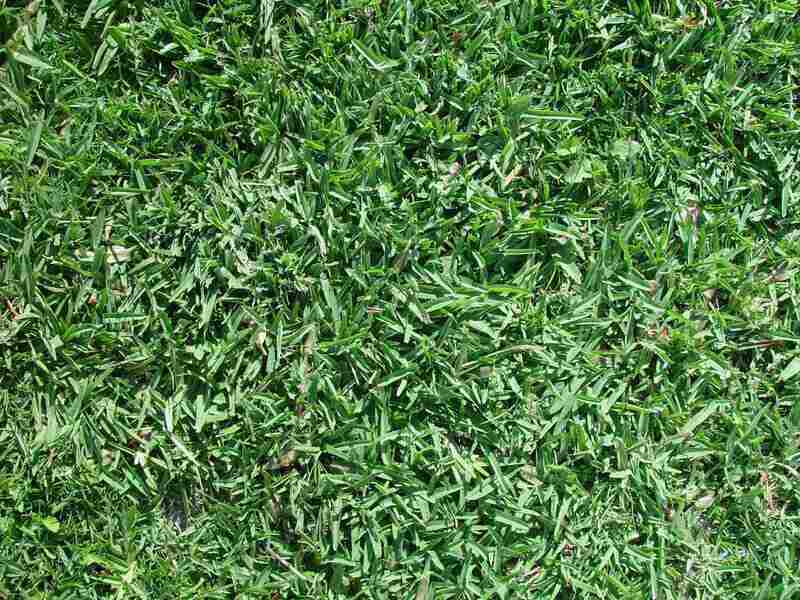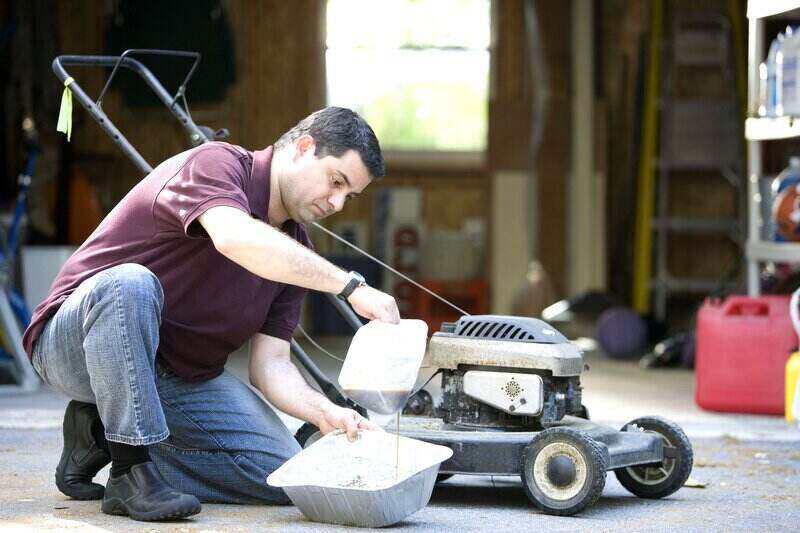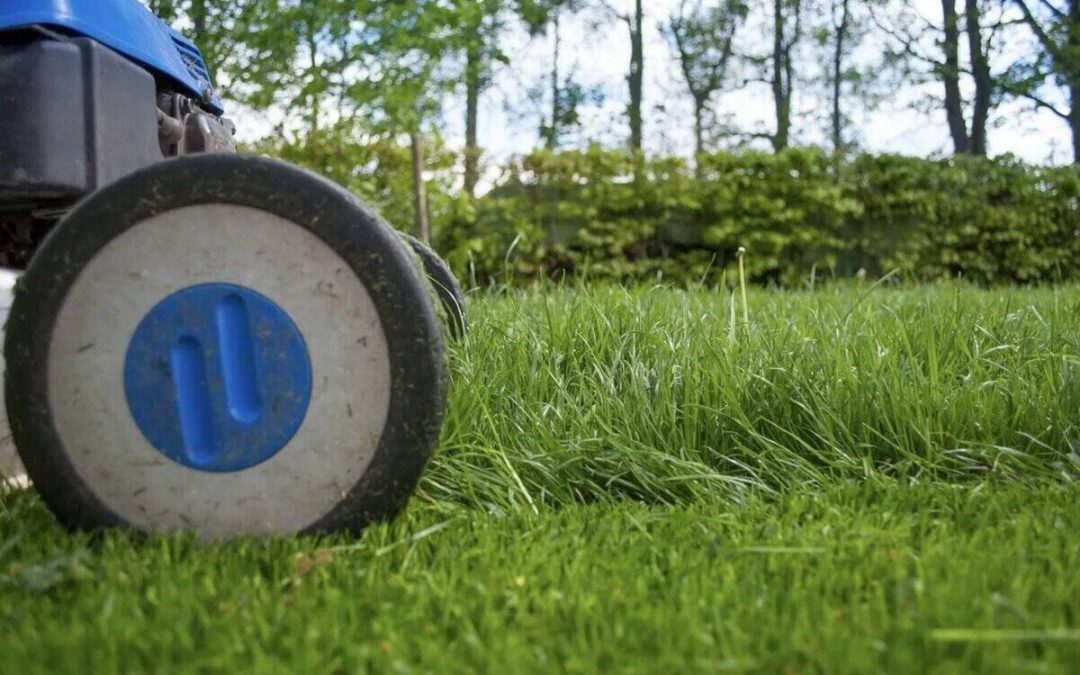We take pride in our lawns in Columbus. The grass that covers your landscape is like a cover to a book. People will assume the inside of your home is just as pristine as your yard. That’s why this quickstart guide to lawn care in Columbus is crucial.
Contents:
- The 4 Most Popular Grass Types in Columbus
- Mowing Tips
- Lawn Mower Care
- Lawn Maintenance
- Columbus Winter Lawn Care
- FAQ
Since we get more than the average amount of precipitation (more than 56 inches a year), lawn care in Columbus is relatively easy. We still need to water occasionally and mow often. How often you should mow, and water depends on the type of grass covering your landscape.
The 4 Most Popular Grass Types in Columbus
Tall Fescue

Tall fescue grass is perfect if you don’t want to spend a lot of time watering and maintaining your lawn. This variety is drought-resistant and will survive a hot, dry summer. It also holds up well during our cold winters.
It does grow quickly and will need mowing at least once a week. It looks best when mowed between 3 and 3½ inches.
Kentucky Bluegrass
This is the most common grass you’ll see on Columbus lawns. Kentucky bluegrass is an eye-catching shade of deep green, but in the spring, the bluish-purple buds tint the landscape blue.
As a cold-season grass, Kentucky bluegrass holds up well to winters here. It’s long-lasting and resilient to heavy foot traffic, It’s also more resistant than other grasses to disease. If you’re planting a new lawn, keep in mind bluegrass takes one to three months to establish itself, so it’s best to plant it in the spring or fall. We recommend mowing this grass to a height of 2 ½ to 3 ½ inches.
Perennial Ryegrass
Got kids and pets? Perennial ryegrass is perfect for your yard. As one of the toughest sods, it can stand up to heavy foot traffic and hot and cold weather. Like Kentucky bluegrass and fescues, it continues to grow in poorly drained soil. It’s best to keep this grass shorter, 1½ to 2½ inches.
Buffalo Grass

Buffalo grass is a North American native turf you can plant and almost forget about. It’s extremely versatile and doesn’t require a lot of attention. It’s also durable and can bounce back after a heavy snowfall and a lot of foot traffic. You should mow Buffalo grass at a height of 2½ to 3½ inches.
Mowing Tips
Never cut more than one-third of the height of your grass. If you cut too much off at once, your grass becomes vulnerable to pests and diseases. Got an overgrown lawn? Sorry: Do multiple mows, taking off one-third each time. Most turfs need a weekly mow until late fall when the growth slows down or stops. Vary the pattern and direction each time you mow. It reduces compaction of the soil and stops your grass blades from leaning in one direction, making the cut uneven. Leave the clippings in the yard as you mow. They will decompose and fertilize your lawn. If you hire a lawn service professional, make sure to remind this person.
Lawn Mower Care
Maintaining your lawn mower is an essential part of lawn care in Columbus. A poorly maintained mower can damage your lawn.
Keep Your Mower Blades Sharp

Dull mower blades will tear the grass instead of cutting it. Shredded grass blades are ugly — and less disease-resistant. With sharp mower blades, you cut efficiently and put less strain on your mower’s engine. Many hardware stores can sharpen them for you, or you can do it yourself in less than an hour. Just make sure you disconnect the spark plug or cord first.
Set the Right Blade Height
You can adjust the cutting height by raising or lowering the mower’s wheel. Look on the side of your lawnmower and find a knob or lever that adjusts the height for your grass type.
Clean and Disinfect
Clean the blades often, so you don’t spread fungus and other lawn diseases throughout your yard. The same goes for pruning shears and other gardening tools.
Lawn Maintenance
Once you put the mower away, you’ll need to make sure your lawn stays thick and green once it comes out of dormancy in the spring. You can do this by preparing it in the fall.
Overseed
Your lawn will start to look tired and worn out after a summer of use. By raking up all debris and thatch and spreading fresh seed, you can replenish some of those bare patches over the fall and winter. A thinning lawn is an invitation for weeds and pests. You can spread seed over the smaller areas by hand, or rent a seed spreader for the entire lawn.
Aerate and Fertilize
Your soil can become compacted after a summer full of heavy traffic. Poking tiny holes in the lawn, or aerating, gives the grass a chance to take in more moisture and nutrients. It also raises the lawn’s resistance to diseases and pests. Do this in the fall, just before you add fertilizer. Fertilizing the lawn at the end of September will help it make it through the cold winter. Before deciding which fertilizer to use, find out what your lawn needs. You can get a home soil test kit at your local home improvement store. The extension office at The Ohio State University can recommend labs in your area to test the soil for you.
Water
Your lawn may need a little more moisture before it goes dormant over the winter. Keep your sprinkler ready until the first frost. A few good soakings will give the roots of the grass the strength it needs to make it through the winter. You also want to make sure the new seeds and fertilizer work their way into the soil. Check with the city or Wikilawn’s post for lawn watering restrictions in your area.
Columbus Winter Lawn Care
While you won’t be mowing in the winter, you can’t completely forget about your lawn after it goes dormant in fall. It’s crucial that you rake up the leaves, or mulch them finely with your mower. Wet leaves that pile up will suffocate your lawn and invite disease. Be sure to remove any lawn furniture from the grass and avoid walking on the lawn when it’s covered with snow or frost. This could damage the lawn when it’s dormant.
FAQ
1. How do I clean my lawn mower blades?
Lay the lawn mower on its side and spray down the mower casing and blade with a high-pressure hose to remove all the grass and debris. It’s crucial that you empty the gas tank and disconnect the spark plugs first.
2. Will lawn decorations harm my grass?
Yes, especially if those ornamental decorations are heavy. Avoid heavy holiday decorations to save your grass from mold and tearing. As far as those garden gnomes? Look for smaller ones and place them at the edge of your yard. You may also want to move them around every so often to allow the sun and water to reach those covered spots.
3. Will long periods of snow in the winter damage my lawn?
It can. When the snow and ice melt, your lawn becomes vulnerable to snow mold, a fungus that can affect cool-season grass types. You can prevent snow mold by avoiding walking on your snow-covered lawn and by fertilizing in the fall, before the first frost.
Don’t have the time or energy to keep your lawn looking pristine? We’ll help you find a lawn care and landscaping professional who can handle the work for you while you sit back and enjoy your yard.
Main photo credit: Rawpixel

